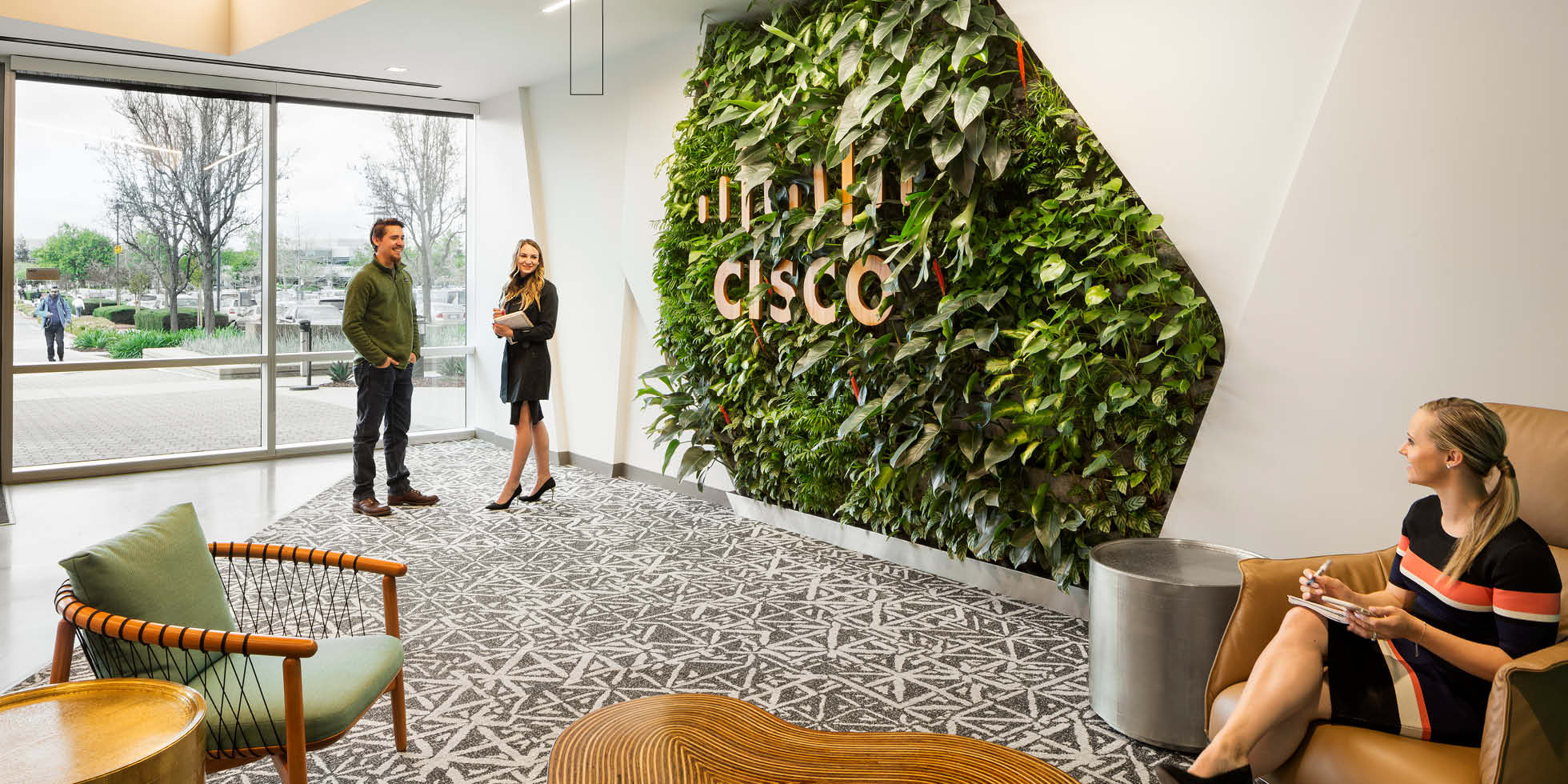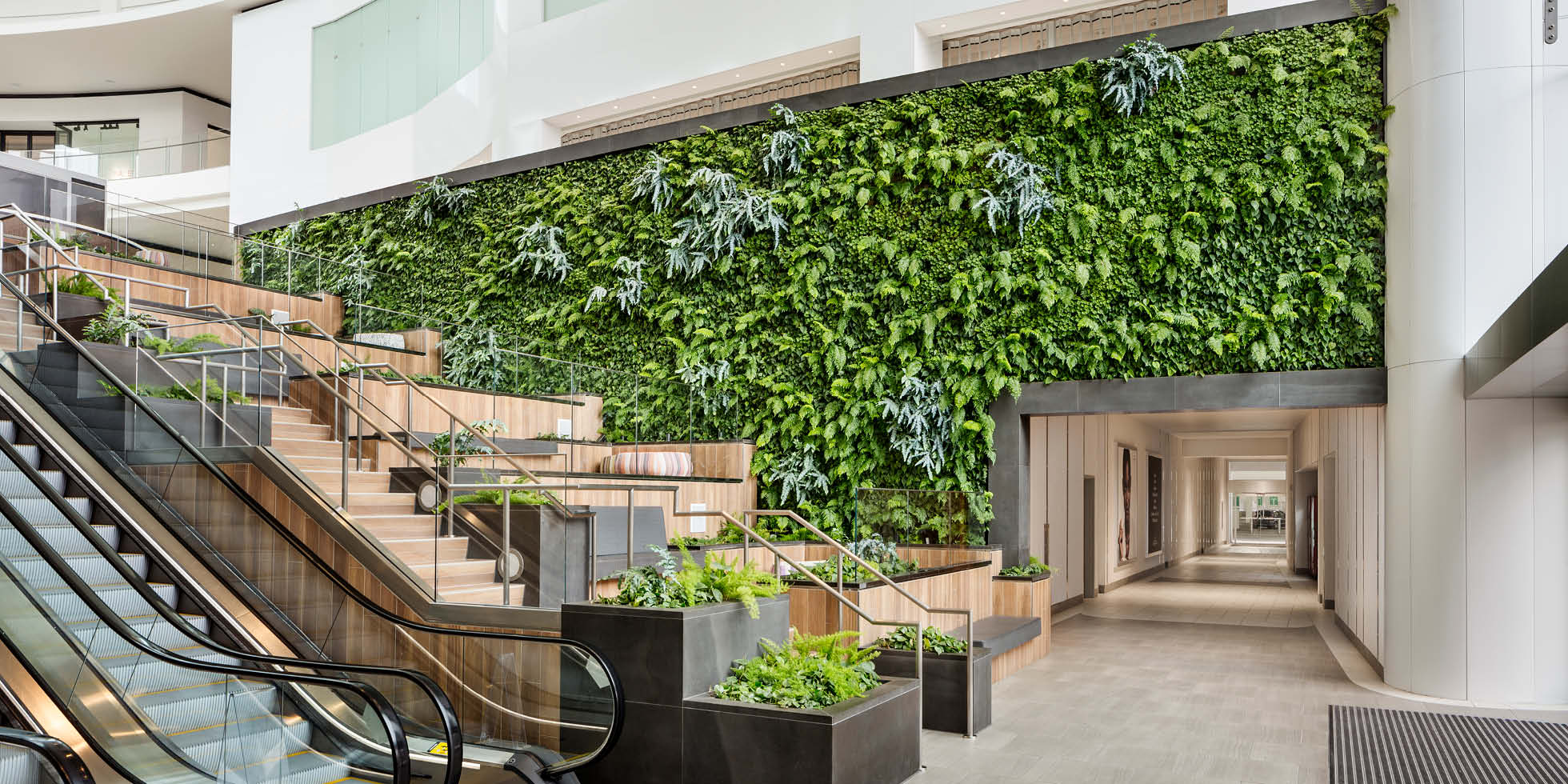Benefits
Green Thumbs and Living Walls in Urban Areas
By Andie Burjek
May. 1, 2017
Apartment-hunting in the city, I’ve been disappointed in the lack of community gardens in these spaces. Apparently that’s not a common thing? Is there no room for green thumbs in city life?

David Brenner had a similar idea in 2008. He’s the principal and lead designer of Habitat Horticulture, a Bay Area-based organization that brings greenery to city spaces, particularly through living walls. His educational background is in horticulture, environmental psychology and landscape design at the California Polytechnic State University, and he also did an apprenticeship at the Royal Botanic Gardens of London where he worked at a tropical nursery.
There, “I got really excited about the ability to grow plants vertically,” said Brenner. He returned to CalPoly, where he started experimenting with growing vertical growth, and since then he’s brought this type of unique garden to corporate and city spaces.
Brenner and his team have put together installations for organizations like the San Francisco Museum of Modern Art, Cisco and Facebook, as well as smaller spaces like a Peet’s Coffee in San Francisco. Part of the beauty of these installations is that they can be grand or small, depending on important considerations like space or budget.

 “I really wanted to bring plants in urban areas and into people’s lives in different ways,” he said. “I was really in tune with the psychological benefits plants have early on, as I grew up watering my grandparent’s plants.”
“I really wanted to bring plants in urban areas and into people’s lives in different ways,” he said. “I was really in tune with the psychological benefits plants have early on, as I grew up watering my grandparent’s plants.”
Several benefits are associated with being in green spaces. Plants have an air purification effect, said Brenner, and they’re one way to bring a diversity of species into the city. Companies could also increase efficiency by filtering storm water or recycled water into living walls. Finally, plants can have a powerful impact on well-being, he added. For example, they can help with stress reduction and lowering heart rates. He also mentioned the revitalization impact plants can have.

From personal experience, I can say that taking a break from being at a desk all day to be outside or experience nature in some way does help me feel more refreshed for the rest of my day. Hearing about this company also brought to mind all the people I know who are gardeners: from my dad to my grandparents to a few coworkers. Realistically plants aren’t a passion for everybody, but for many people it’s a major stress relief. Something lush and green is an amazing break from concrete and congestion, especially in a city like Chicago.
Habitat Horticulture was the first companies in the Bay Area to offer a product like this, in 2010. And in the past several years the trend has grown. A quick google search brought up many, many other companies in areas specializing in interior plant design around the U.S., including Chicago-based NPK Associates, Michigan-based LiveWall, and Des-Plaines-Illinois based Ambius.
For Brenner and his team of 22 at Habitat Horticulture, the whole process starts with, what does the client want? “I don’t like to say no. I think there’s a way to do everything,” said Brenner, who thinks it’s fun to experiment with new ideas. The organization conveys the type of installation they’re looking for (Is it lush or natural? Any color preferences? What texture? Etc.), and Brenner draws the design out on an Ipad. His team includes people who specialize in installation, irrigation, project management and, very importantly, maintenance.
I was interested to hear about how he decides what type of plants fit a company’s vision and workspace. For example, with the San Francisco Museum of Modern Art, the design focused on California-native species. Brenner thought of what people could find in California. The wall ended up being something very lush and green and inclusive of local species.
Another way he might decide what fits the space is the environment in which the wall exists. The Jaspar building had a very tall, vertical, outdoor wall. To create movement throughout wall, Brenner chose some not-so-wind-resistant plants to get a windswept look to the wall. Rather than working against the environment, the design embraced it. “The beauty of plants is they interact with their environment, and wind is part of that,” said Brenner.
For some businesses, something of this scale may not be possible, for space and money reasons. Other options Habitat Horticulture offers are picture-frame sized installations and living tables.
“Living walls is the primary focus,” said Brenner. “But our broader goal is to bring greenery into office spaces in different ways.”
Andie Burjek is a Workforce associate editor. Comment below, or email at aburjek@humancapitalmedia.com. Follow Workforce on Twitter at @workforcenews.
Schedule, engage, and pay your staff in one system with Workforce.com.